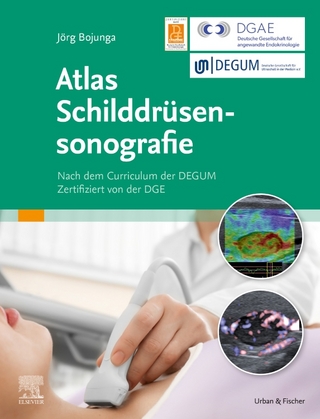
Estrogen Receptors
Humana Press Inc. (Verlag)
978-1-4939-5006-5 (ISBN)
Cutting-edge and thorough, Estrogen Receptors: Methods and Protocols is a detailed and helpful resource for scientists who are intrigued by the many facets of estrogen.
The chapter 'Bioinformatics Analysisof Estrogen-Responsive Genes' is open access under a CC BY 4.0 license.
Kathleen (Kathy) Eyster Professor of Physiology and Pharmacology Sanford School of Medicine of the University of South Dakota 605-677-5159
The Estrogen Receptors: An Overview from Different Perspectives.- Competitive Binding Assay for the G-Protein Coupled Receptor 30 (GPR30) or G-Protein Coupled Estrogen Receptor (GPER).- The Use of Real Time Reverse Transcription-PCR for Assessing Estrogen Receptor and Estrogen-Responsive Gene Expression.- Bioinformatics Analysis of Estrogen-Responsive Genes.- Electrophoretic Mobility Shift Assay (EMSA) and Supershift Assay of Cytochrome P450 2B6 in Response to Estrogen.- Chromatin Immunoprecipitation Assay to Identify Genomic Binding Sites of Regulatory Factors.- Chromatin Immunoprecipitation with Estrogen Receptor 1 and the Promoter of Greb1 in TM4 Sertoli Cells.- Chromatin Immunoprecipitation-Sequencing (ChIP-seq) for Mapping of Estrogen Receptor-Chromatin Interactions in Breast Cancer.- RNA-Seq Experiment and Data Analysis.- DNA Microarray Analysis of Estrogen-Responsive Genes.- Shotgun Proteomics Analysis of Estrogen Effects in the Uterus Using Two Dimensional Liquid Chromatography and Tandem Mass Spectrometry.- Assessment of Protein Expression by Proximity Ligation Assay in the Nonhuman Primate Endometrium, Placenta, and Fetal Adrenal in Response to Estrogen.- Co-Localization of Estrogen Receptors with the Fluorescent Tamoxifen Derivative, FLTX1, Analyzed by Confocal Microscopy.- Live Cell Imaging of the Estrogen Receptor by Total Internal Reflection Fluorescence Microscopy.- In Situ Hybridization of Estrogen Receptors α and β and GPER in the Human Testis.- Purification of Histone Lysine Methyltransferase SMYD2 and Co-Crystallization with a Target Peptide from Estrogen Receptor a.- Gold Nanoparticle-Based Förster Resonance Energy Transfer (FRET) Analysis of Estrogen Receptor: DNA Interaction.- Analysis of Interaction of Estradiol with Estrogen Receptor by NMR Spectroscopy.- Application of Circular Dichroism Spectroscopy to the Analysis of the Interaction between the Estrogen Receptor Alpha and Co-Activators: The Case of Calmodulin.- Surface Plasmon Resonance Study of Cooperative Interactions of Estrogen Receptor α and Specificity Protein 1 with Composite DNA Elements.- Tips and Tricks for Successful Application of Statistical Methods to Biological Data.- The Synonymous Ala87 Mutation of Estrogen Receptor Alpha Modifies Transcriptional Activation through Both ERE and AP1 Sites.- Selective Estrogen Receptor Modulators and the Tissue-Selective Estrogen Complex: Analysis of Cell Type-Specific Effects using In Vivo Imaging of a Reporter Mouse Model.- Use of Reporter Genes to Analyze Estrogen Response: The Transgenic Zebrafish Model.- Comparison of the Effects of the Selective Estrogen Receptor Modulators Ospemifene, Raloxifene, and Tamoxifen on Breast Tissue in Ex Vivo Culture.- Estrogen Receptor Agonists and Antagonists in the Yeast Estrogen Bioassay.- Silencing Estrogen Receptor-α with siRNA inthe Intact Rodent Brain.- Silencing Estrogen Receptor-β with siRNA in Cultured Cells.- Experimental Procedures for Demonstration of MicroRNA Mediated Enhancement of Functional Neuroprotective Effects of Estrogen Receptor Agonists.- Expression Profiles of Estrogen-Regulated MicroRNAs in Breast Cancer Cells.- Estradiol-Induced Transcriptional Regulation of Long Non-Coding RNA, HOTAIR.-Detection and Functional Analysis of Estrogen Receptor α Phosphorylated at Serine 216 in Mouse Neutrophils.- Estrogen Receptor-α Knockout Mice.- Detection of Endogenous Selective Estrogen Receptor Modulators such as 27-Hydroxycholesterol.- Phytoestrogens Activate the Estrogen Receptor in HepG2 Cells.- Detection of the Phosphorylation of the Estrogen Receptor a as an Outcome of GPR30 Activation.- GPER Mediates Non-Genomic Effects of Estrogen.- GPER/GPR30 Knockout Mice: Effects of GPER on Metabolism.- Analysis of G-Protein Coupled Receptor 30 (GPR30) on Endothelial Inflammation.- Atherosclerosis and Vascular Biologic Responses to Estrogens: Histologic, Immunohistochemical, Biochemical, and Molecular Methods.- Assessing Direct Vascular Actions of Estrogens.- Molecular Design, Synthesis, and Evaluation of SNIPER(ER) that Induces Proteasomal Degradation of ERα.- Regulation of Activation Induced Deaminase (AID) by Estrogen.
| Erscheinungsdatum | 19.08.2017 |
|---|---|
| Reihe/Serie | Methods in Molecular Biology ; 1366 |
| Zusatzinfo | 87 Illustrations, color; 41 Illustrations, black and white; XVI, 576 p. 128 illus., 87 illus. in color. |
| Verlagsort | Totowa, NJ |
| Sprache | englisch |
| Maße | 178 x 254 mm |
| Themenwelt | Medizinische Fachgebiete ► Innere Medizin ► Endokrinologie |
| Naturwissenschaften ► Biologie ► Biochemie | |
| Schlagworte | Estrogen Receptor • genomic nuclear estrogen receptors • nongenomic estrogen receptor • Proximity ligation assay • receptor binding assays • RNAseq • Western Blot |
| ISBN-10 | 1-4939-5006-1 / 1493950061 |
| ISBN-13 | 978-1-4939-5006-5 / 9781493950065 |
| Zustand | Neuware |
| Haben Sie eine Frage zum Produkt? |
aus dem Bereich


